Football is a sport which is intertwined, interconnected and inseparable.
Clearly, those who have created and developed Positional Play are exploring the most uncomplicated way to secure the best strategies to beat the opponent and avoid losing.
That’s the eternity defence-attack relationship.
Everything in football is connected, indeed.
There are many definitions and principles of Positional Play, but the simplest one for most is searching for superiorities.
Although there are various ways and types of superiority, they aren’t the aim.
They are the tools to reach the aim.
Superiorities provide significant influences in the game.
Once superiority is achieved, the team can use it to dominate the game.
Positional Play is not a passing game more than attempting to gain various forms of superiority in each part of the pitch and each phase of play.
Generating superiorities, fundamentally, is about focus, intensity and excellence.
We can see how Pep Guardiola from Barcelona to Man City has promoted his positional play style from the horizontal axis to the vertical one under the same principles.
Numerical, qualitative, positional and dynamic are the main types of superiorities.
As much as these types are divided, they are strongly connected.
Undoubtedly, Nagelsmann’s formations, especially a 3-1-4-2 setup, are superiority hunters.
“There’s numerical, positional, and qualitative superiority. Not all 1v1’s are a situation of equality” – Paco Seirul-Lo
This tactical analysis will examine the various types of superiority, their principles, and how Julian Nagelsmann executes them with Bayern Munich, especially in the advanced attacking phases.
Numerical superiority
“There is a famous phrase ‘Pass and Move’, Move where? Football is about rationally occupying the space, and the ball moves to the space.” -Pep Guardiola
The most straightforward definition of numerical advantage is having more players than the opposition in a given situation, but achieving this attitude would be more difficult than the definition’s simplicity suggests.
From RB Leipzig to Bayern Munich, Julian Nagelsmann fundamentally considers possession as a tool rather than an approach. He operates his teams with a vertical axis rather than a horizontal one to reach the goal while seeking to gain fluidity and dynamics under high tempo and momentum.
Here, the difference between Pep and Julian is about the sacrifice.
Nagelsmann’s desire for the vertical axis means taking more risks to lose the ball, yet this tempo could also extremely hurt opponents at their unorganized moments.
Because of its importance, Bayern Munich with Julian Nagelsmann generally seeks to create superiority all around the pitch, particularly in the advanced attacking phases that have reflections in the defensive phases.
Typically, the main principle of supporting the ball in the positional attack is creating triangles or diamonds while covering the different critical areas related to the ball.
The players principally position themselves to create triangles and diamonds, which have different forms from the flank to the central zone, and perform various efficient vertical and diagonal movements.
They also provide back passes to the relay players to secure and circulate to retain possession.
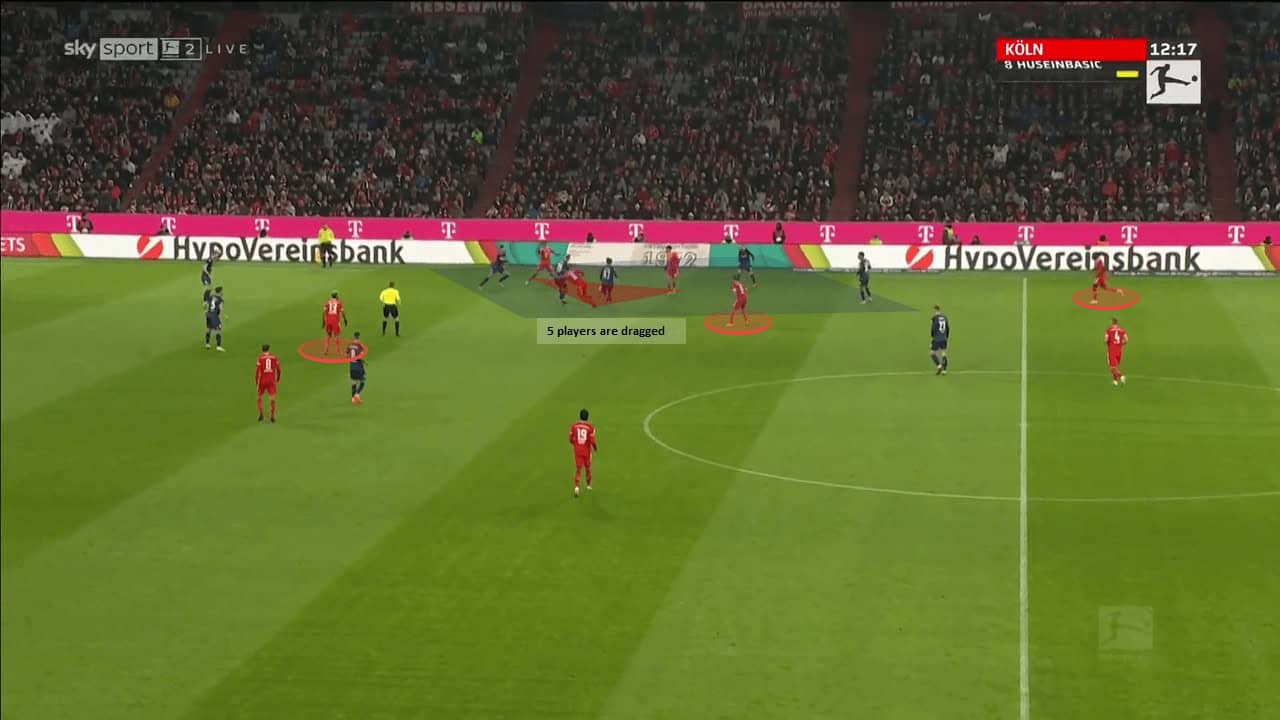
Overloading means combinations are more efficient, and tighter and provoke as much as possible opponents to press.
It possibly penetrates the near side or switches to the weak side of the pitch in space, providing a more stable possession.
Nagelsman’s idea here is to have at least three players or more as options for the ball carrier occupying the horizontal, vertical, and diagonal lines.
These options are not rigid; they are always flowing and dynamic.
The concept is to have players more than the opponent in the most influencing situations, which provokes the opponents to move out of their positions to generate new space behind.
They are furthermore, having the greater numbers in the last line.
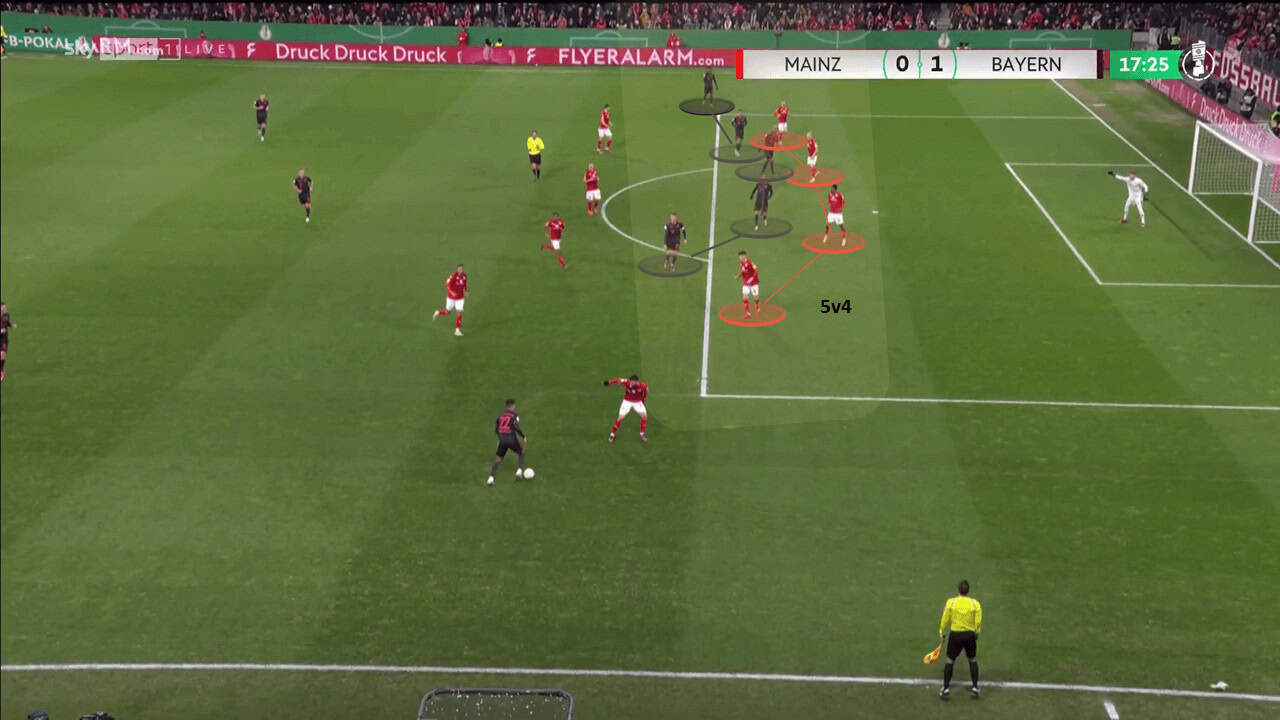
Creating rondo drills here and training them well is vital to those teams’ keeping the highest level of tempo, dynamics, and fluidity to support the ball carrier.
As mentioned, the various types are connected, which leads us to another vital kind of superiority: positional advantage.
Positional superiority
“Pass to the next lines of play.” – Juan Manuel Lillo
This superiority (space or positional) requires optimal players to arrange and position themselves between lines at various heights and depths, creating vertical and diagonal lanes in the interior spaces within the opponent’s structure while generally having the greater number occupy these specific dangerous zones related to the ball under the principle that the reference is the ball, their teammates, the opponents, and space.
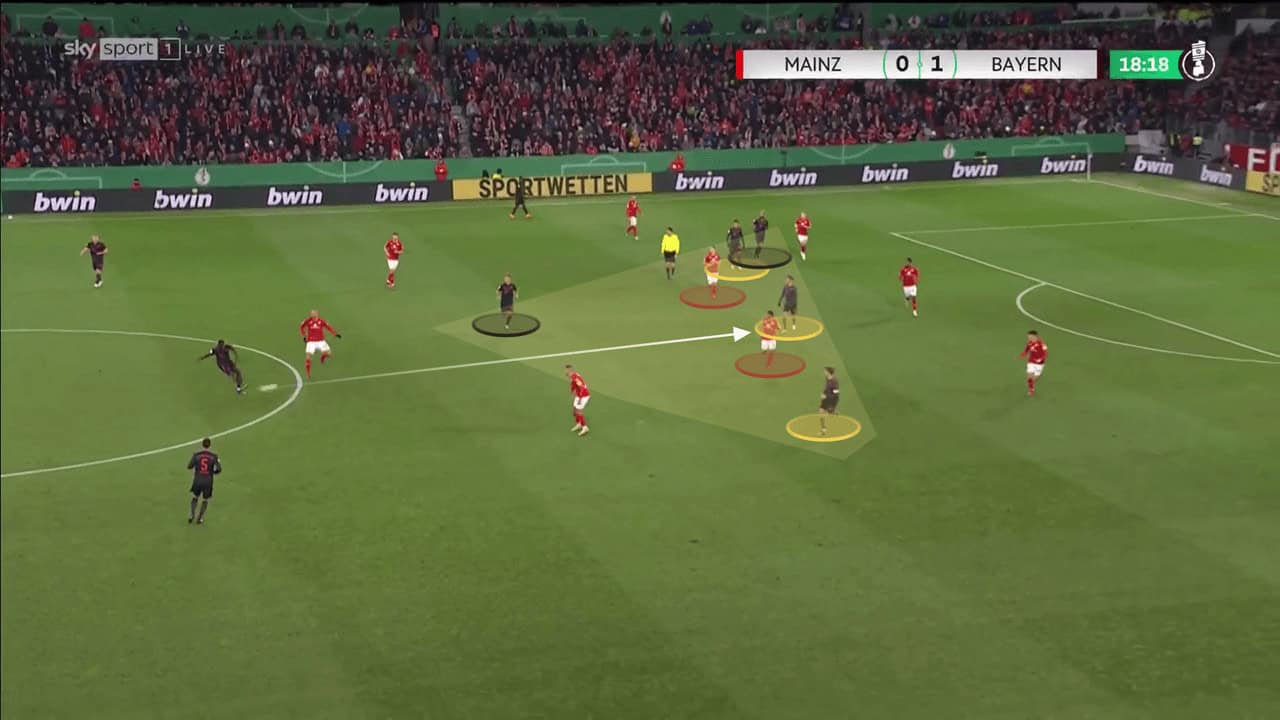
The aim is to break the opposition’s structure by making a straight pass between their lines, which provides direct forwardness or escape from any pressure.
This action of playing i/b lines generates a lot of fluidity and dynamics and forces the backline to pull out to react.
In different situations, whether escaping pressure or penetrating, Bayern consistently looks for operating the players in between lines to execute one-twos or third-man combinations.
Breaking the advanced lines of the defensive block by a forward laser pass, which is commonly used in the NFL, to the interior player who receives on half-turn and lays the ball off to the third man, like the graphic below, has provoked PSG’s centre-backs to move out of their positions.
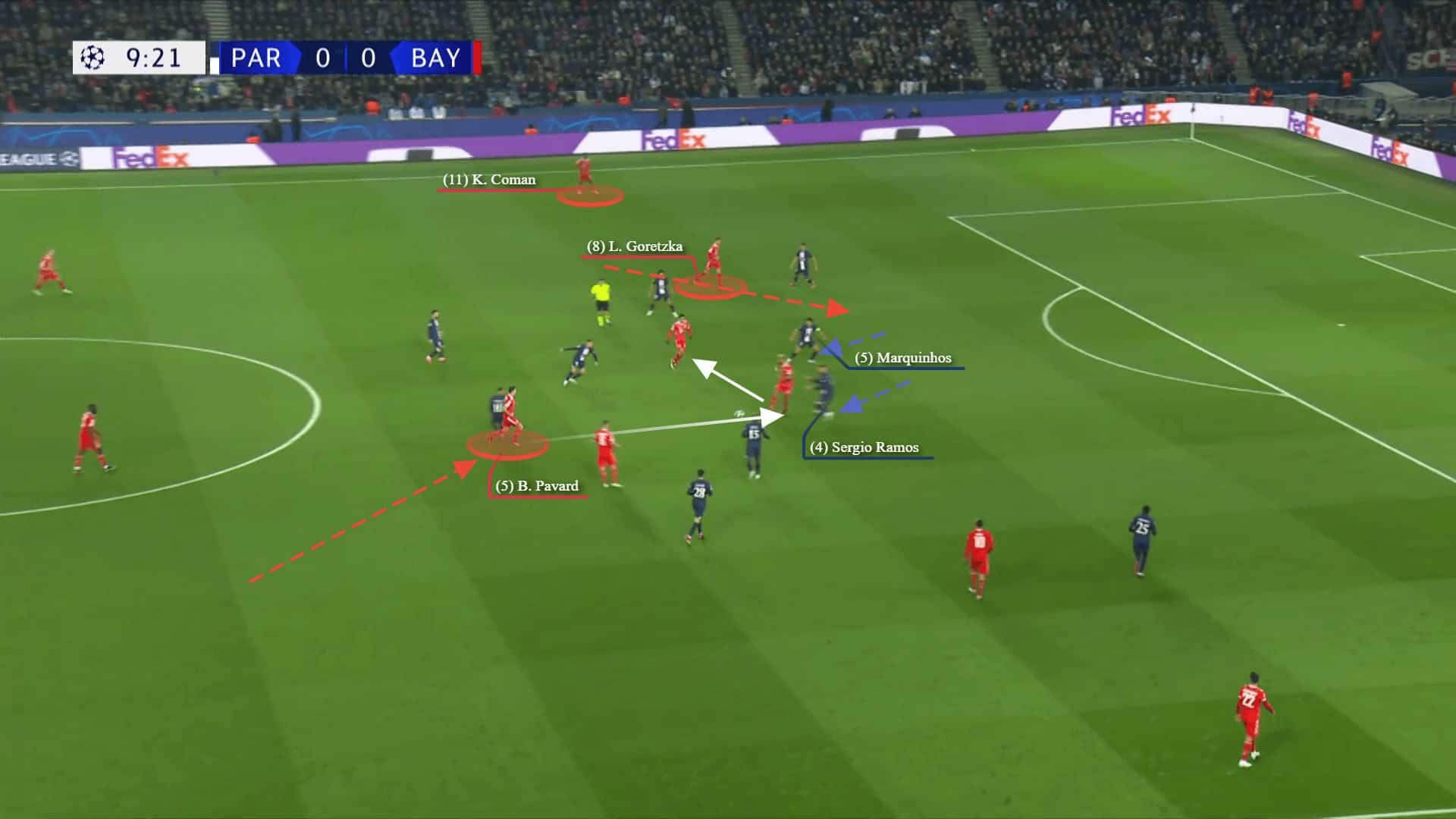
Once the ball is laid off to the player who has less pressure and a better view of the field, that’s dangerous also in addition to the opponents leaving their positions which generates spaces to be exploited by another kind of superiority the dynamic, we explain it next.
Dynamic superiority
“Football is not just about running, it’s about running smartly” -Arsène Wenger
Dynamicity eventually can clarify the positional attack itself; it refers to the ability to generate the flow of the play and primarily to create and exploit space on the pitch.
It encompasses aspects such as movement, speed of play, and generally changing the tempo.
However, dynamic superiority is a kind of time and spatial advantage that varies depending on the situation.
Using the best body orientation to attack the opponent at the proper moment to exploit the space within the structure or behind the lines requires brilliant, sharp off-ball movements and incisive passing abilities, as well as strong communication and teamwork, which demands a combination of technical and tactical ability.
Having a better positive body orientation toward the goal over the defender has a huge impact when they start their movement. The attacker certainly has the advantage.
One of its variations is generated from the combinations, particularly the third man.
Bayern usually used this variation, like cleared in the previous graphic.
There, Leon Goretzka has a better body orientation over the two centre-backs and is ready to exploit behind the backline if he receives the ball there.
Another one that Bayern with Nagelsmann is using, usually related to the vertical axis and forwardness, is attacking the backline from the half-spaces with vertical and diagonal runs.
In the graphic below against Werder Bremen, Lucas Hernández is playing a longball behind the backline toward Pavard, who is running diagonally from a deep position and has the dynamic advantage over the nearest defender.
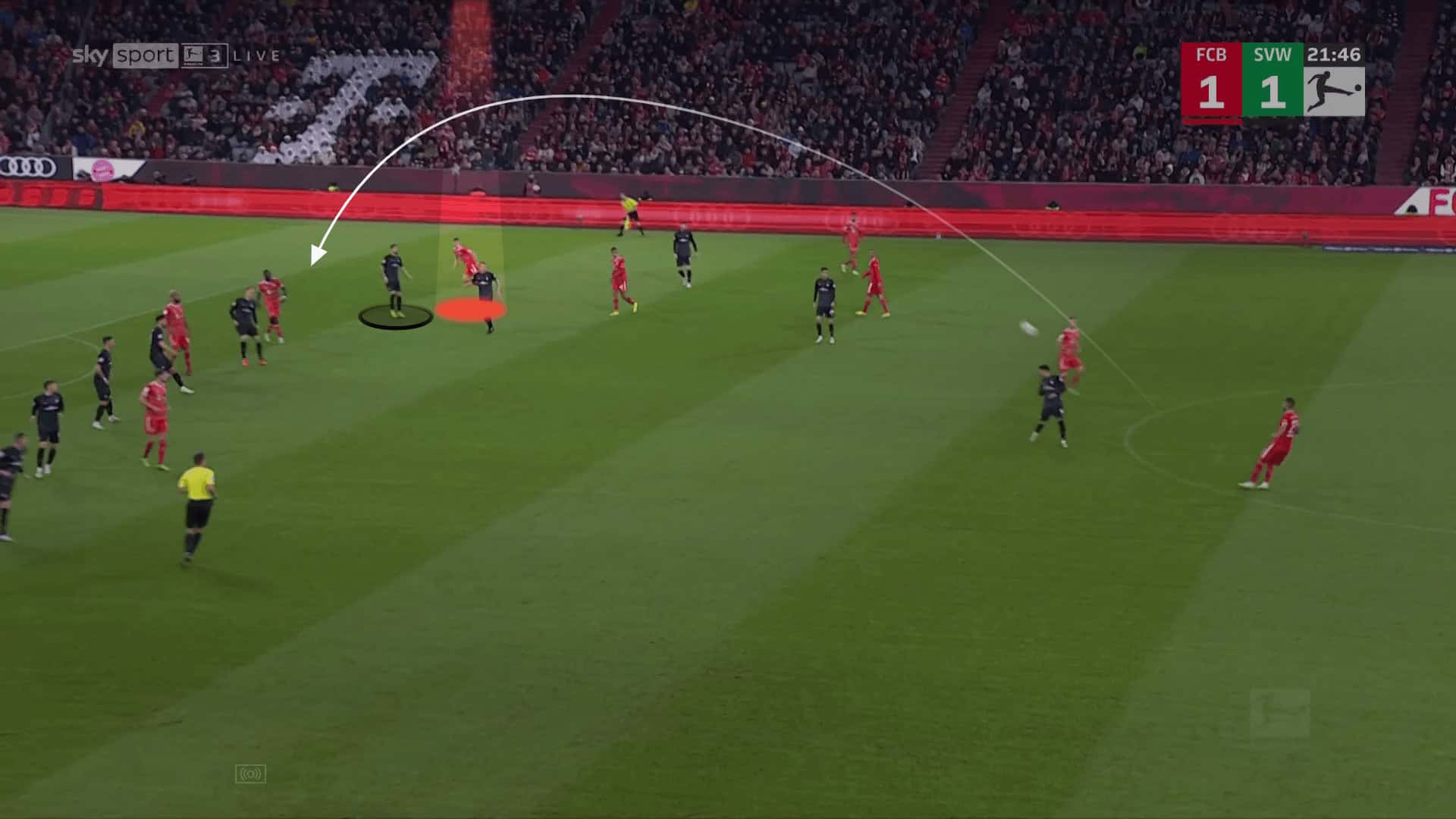
Also, here below, during a speedy counterattack, Maxim Choupo-Moting intends to receive from Jamal Musiala in the optimal time while gaining the dynamic advantage or having a better body orientation than the defender towards the goal.
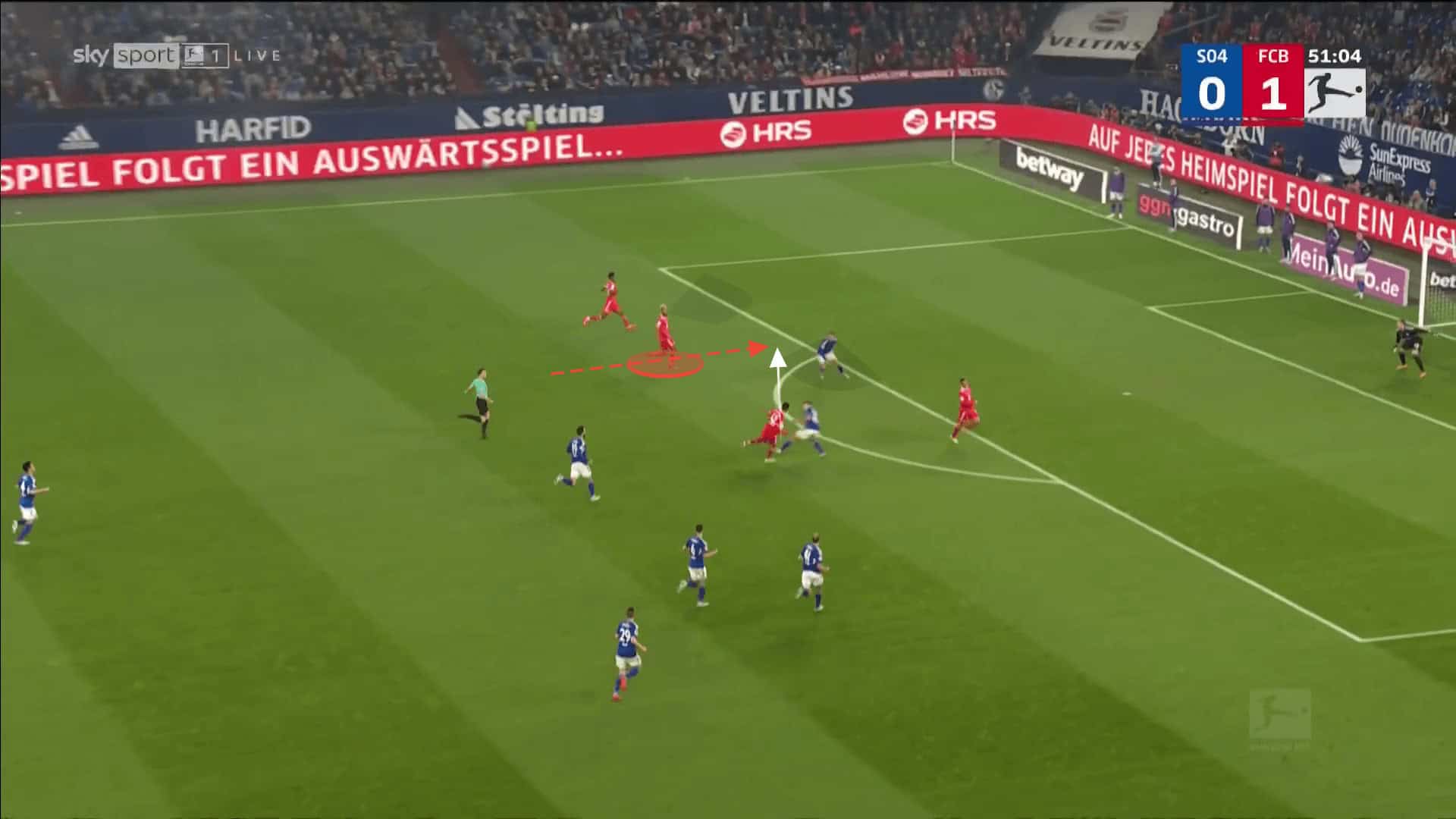
There is also a common variation to use dynamic superiority: when the winger is stuck on the flank and intends to play a diagonal back pass.
this back pass is considered a pressing trigger which provokes the player to step up.
In the below graphic, Coman was stuck in a 2v1 situation.
At the same time, the backline was at the line of the six-yard.
Coman decided to play this diagonal back pass to Kimmich, which provoked the backline to step forward.
Here, Davies started to run in behind, waiting for the cross while gaining a dynamic advantage over the nearest defender.
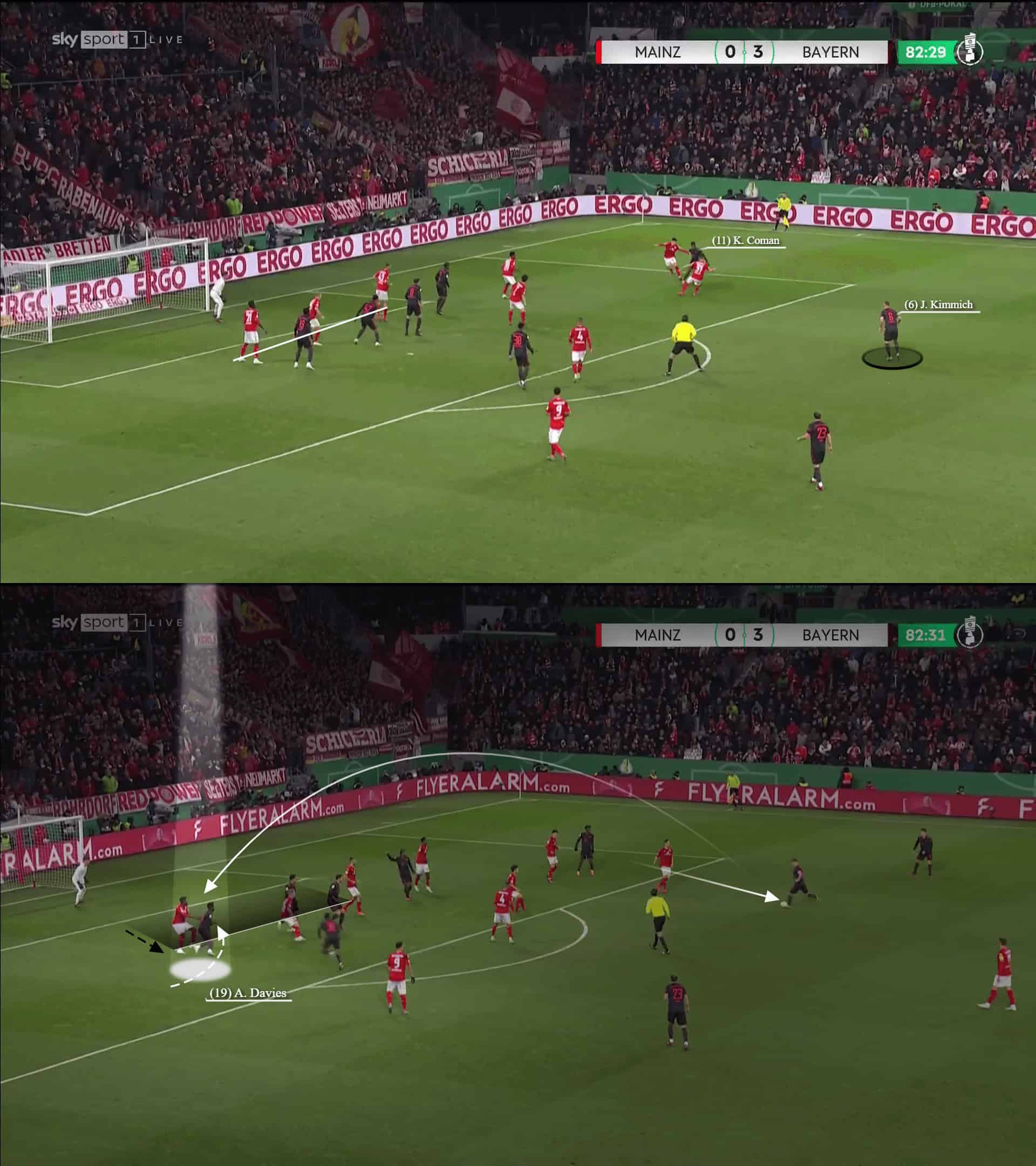
Qualitative superiority
“The principal idea of Positional Play is that players pass the ball to each other in close spaces to be able to pass to a wide-open man.” – Juan Manuel Lillo
First and foremost, qualitative superiority can be explained on a general basis in football as the quality of the teams, the teams with more qualified departments, better coaches, and better players.
At this pinpoint on the pitch, teams like Bayern Munich have proportionally superior technical, tactical, physical, or mental attributes of one team compared to others, which can manifest in various ways on the pitch, giving the team the edge over its opponents.
In the positional play aspect, there is a huge aim and usage of this superiority during the attack.
Qualitative superiority is about isolating and searching for 1v1s and 2v2s of the better technical players against the opposition’s worst players in given situations, maximizing the individual’s strengths.
Bayern usually uses an ‘overload to isolate’ strategy, creating numerical superiority in a specific zone of the pitch to drag most opponents and then isolating another targetted zone where one defender from the opposing team is left to defend against multiple players or a technical player takes advantage of the space that is created.
Overloading to isolate requires good communication, coordination, and a clear understanding of each player’s tactics and roles.
It is a high-risk, high-reward strategy, and teams must be prepared to counter any defensive responses from the opposition.
Conclusion
The tactical theory has clarified the principles of various superiority in positional attack; the case study is Bayern Munich with Nagelsmann’s style of play.
The article discusses various types of superiority, including numerical, positional, and dynamic superiority, and explains how Julian Nagelsmann executes them, particularly in the advanced attacking phases.
Finally, the dynamicity of the game refers to the ability to generate the flow of the play and primarily to create and exploit the space on the pitch.





Comments